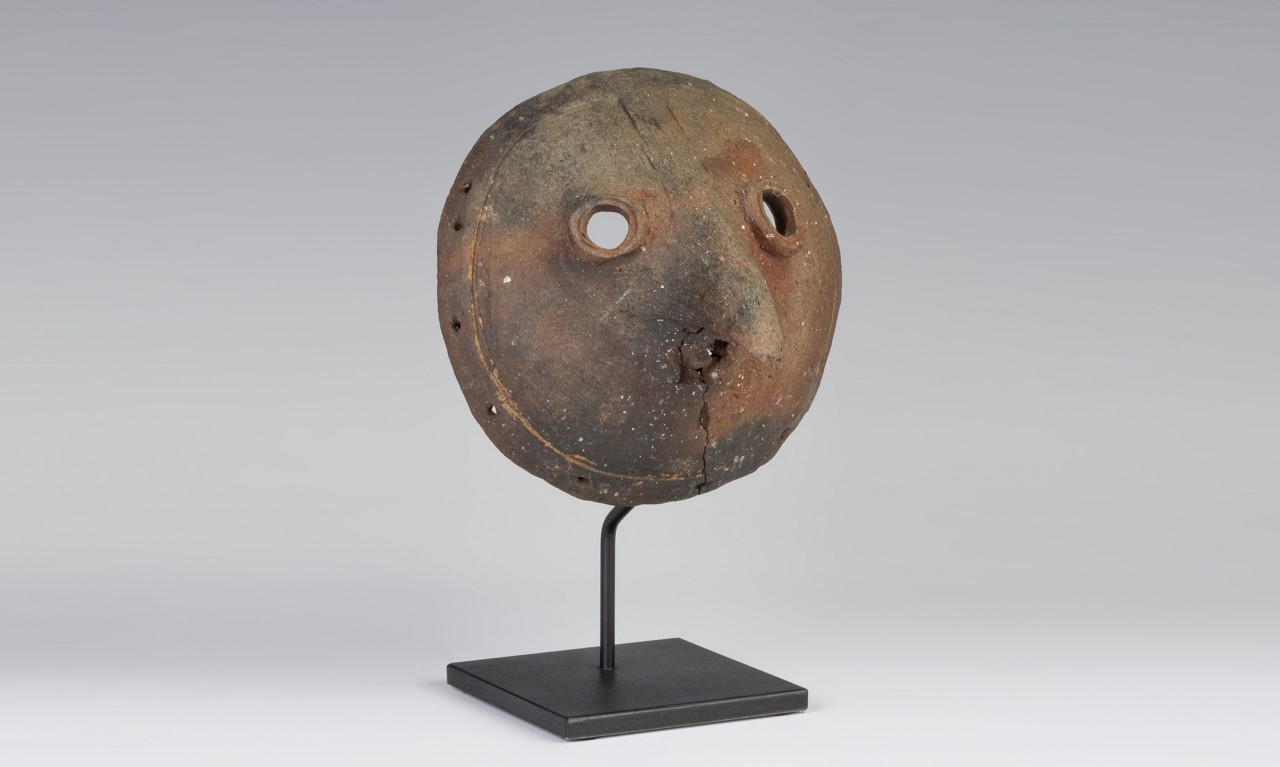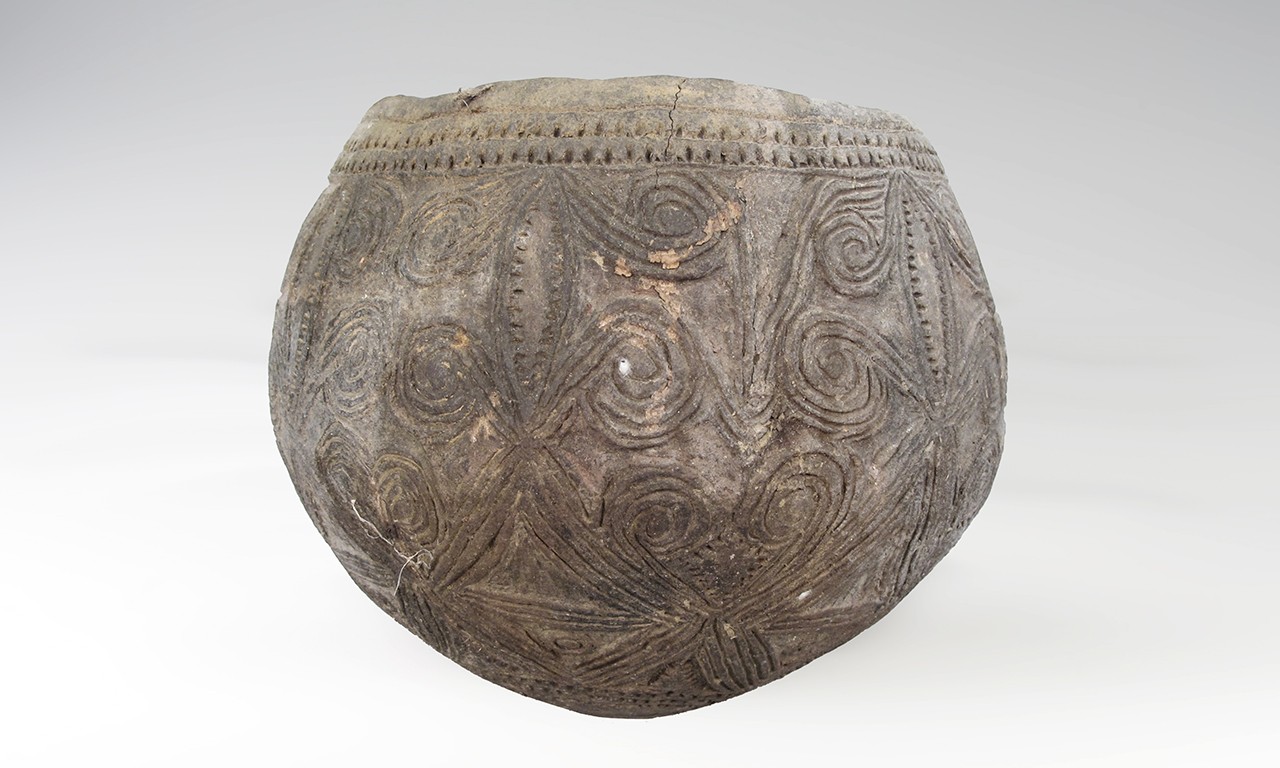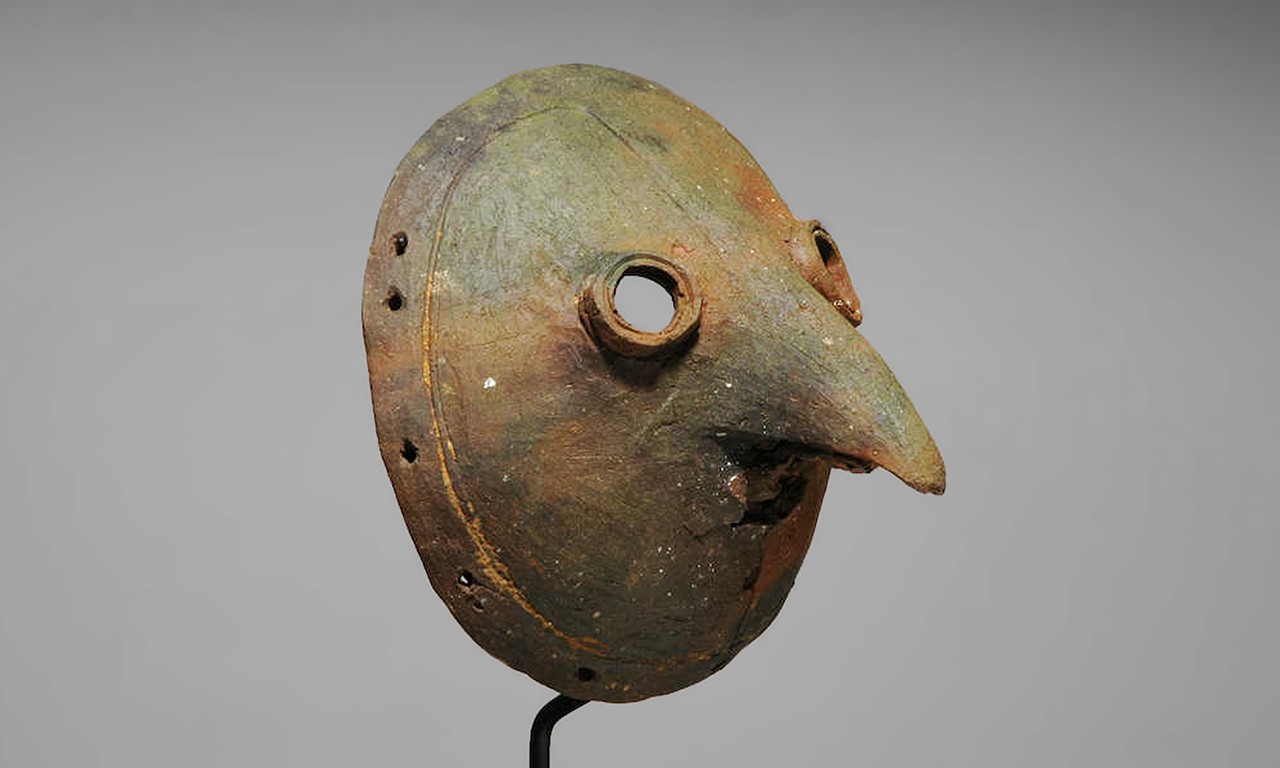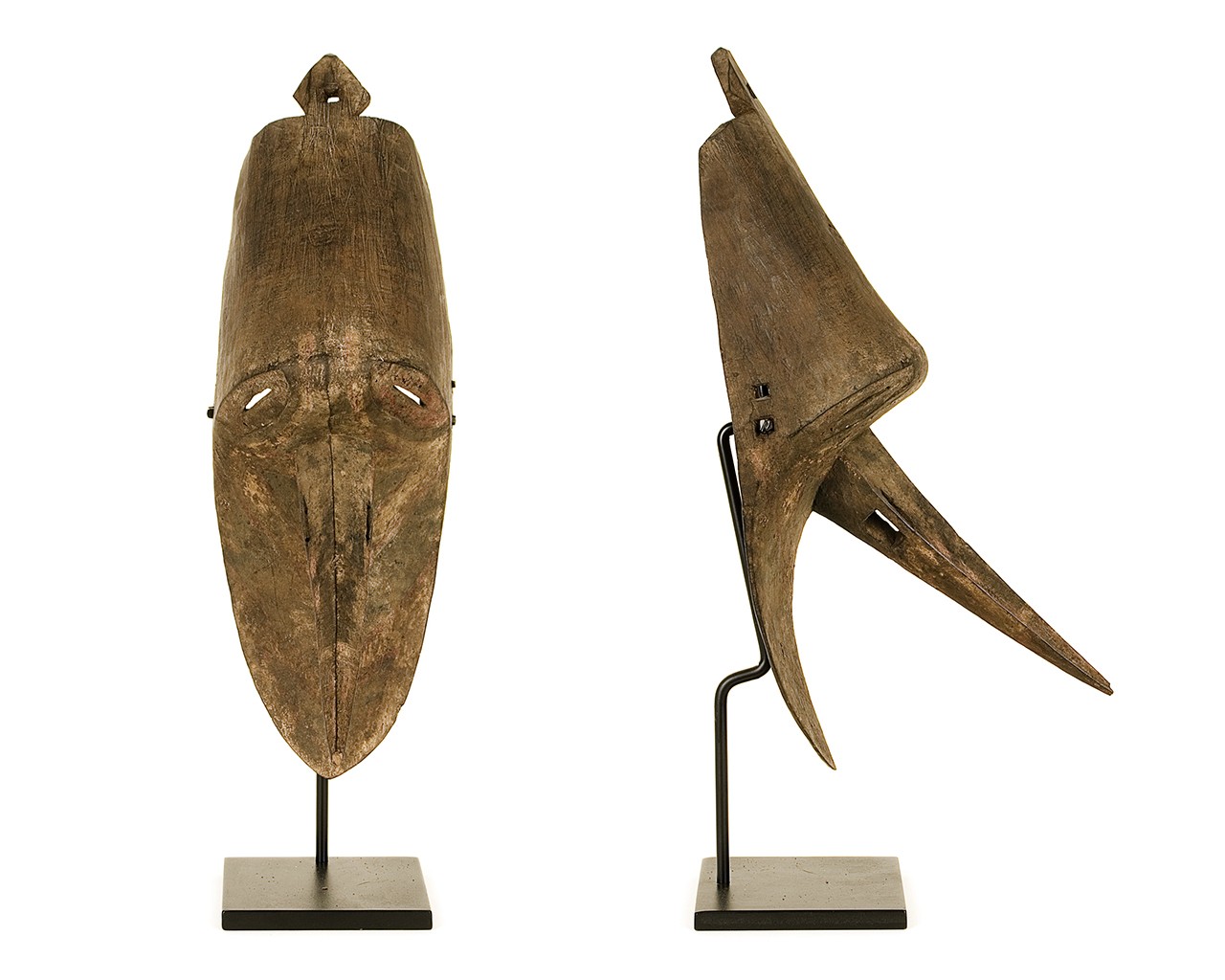2002 North Main Street
Santa Ana, California 92706
TEL: 714.567.3600
Beak Performance: Studying A Boiken Pottery Mask
 |
| Pottery Mask, early to mid 20th Century Boiken culture; East Sepik Province, Papua New Guinea, Melanesia Ceramic; 7 1/4 × 7 1/2 × 5 in. 2009.2.1 Bowers Museum Purchase |
Plastic Art, Clay Medium
Whereas sculptures and masks were carved from wood by many of the cultures of Papua New Guinea, non-utilitarian ceramics were a rarity for all but a handful of the island’s cultures. This small, disc-shaped face, distinguished by a sharply protruding beak and avian features, is uncommon even within this relatively limited categorization. To be more specific, there are exactly two documented examples of this style of ceramic pottery mask made by the Nagum Boiken of the East Sepik Province. In this post we take a close look at how this style of pottery would be made, factors surrounding its creation, other Boiken pottery objects, and masks made by the Boiken in other mediums.
 |
| Pot with Incised Designs on the Exterior, 20th century Boiken culture; Prince Alexander Mountains, East Sepik Province, Papua New Guinea, Melanesia, Oceania Ceramic; 7 x 8 ½ in. 2011.6.3 Gift of Ms. Lesley Martin |
Time to Coil Off
This mask originates from a village west of Wewak in East Sepik Province where documentation and published findings on pottery production have focused on food containers and vessels. The Bowers Blog itself has previously featured Boiken ceramics in The Clay Day of Papuan Ceramics. As is the case with vessels, this mask was made with a coiling technique. Clay would be rolled out, and then coiled into roughly the shape of the final object. The clay would be smoothened until the surface appeared flat, then carved in relief or otherwise molded to create desired features and then fired. This mask does feature one large circle carved in relief around the outside of the mark as if to create a border. Both the curved protrusion and circular eye holes demonstrate very precise sculpting on the part of the maker.
Crooked Bill
Other features and the history of the region’s pottery tradition are well known. This mask would almost certainly have been made by a man, as men traditionally served as ceramicists in much of New Guinea. This was especially true for objects which do not fall under daily use. Amongst the neighboring Abelam culture, women were not even allowed to use ceramic objects. Unlike the Abelam, Boiken artistic traditions suffered early on from European influence in the region. Much of the region’s ceramicware was discontinued in favor of imported aluminum and enamel dishes. Traditional arts have been further abstracted by a focus on made-for-export pieces which are non-utilitarian but tend to be only loosely based off traditionally New Guinean artforms.
 |
| Alternate view of 2009.2.1 Bowers Museum Purchase |
Leave it to the Birds
Though there is no recorded information about the use of these pottery masks, we can learn a lot about why they might have been made from their design. The round eye openings and molded beak together might evoke in those who have studied European history—especially in these pandemic-ridden days—images of plague doctors. One might assume then that it would be worn as is, but its dimensions are too small to fit an adult’s face. As masks were generally forbidden to the uninitiated, we know that this was not a child’s mask. What tells us more are the piercings around the edges. They indicate that this mask was intended to be attached to some larger object or structure by cord.
 |
| Mask (Barak), late 19th - 20th century Boiken culture; Bungain village, East Sepik Province, Papua New Guinea, Melanesia Wood and paint; 19 × 5 1/8 × 12 in. L.2010.4.42 Loan courtesy of Gayle and Edward P. Roski |
Boulevard of Barak and Dreams
A comparison to other Boiken art is equally revealing. Pottery is a rare medium for masks among the Boiken, but the form, even that of the very distinctly shaped beak, appears with some frequency in the woodcarvings. These wooden masks are called barak and were collected from Bungain village in the East Sepik Province of Papua New Guinea. Just as the pottery mask featured in this post has holes around its periphery, this mask also has holes that can be strung through with fiber cord. Wooden dance masks might be worn if they were large enough. Small masks would instead be tied to larger basketry masks and danced that way. As is the case with many wooden masks, when not in use they were stored in the men's Spirit House (Haus Tamabaran). The young and uninitiated were forbidden to see the masks or even witness the highly ritualized dances. The collector of this object also saw these masks incorporated into Boiken healing shrines made up of an assortment of miscellaneous items such as bones, stones, and carved figures thought to possess magical and curative powers.
Text and images may be under copyright. Please contact Collection Department for permission to use. References are available on request. Information subject to change upon further research.

Comments 1
The mask is a most interesting acquisition, indeed.